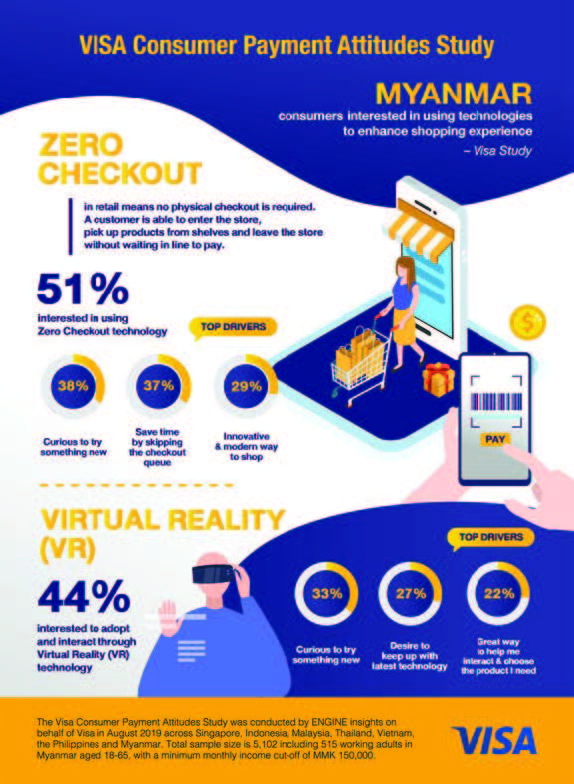9 Sep
VISA, the world’s leader in digital payments, revealed that more than half (51 per cent) of Myanmar consumers are interested in using zero checkout technology, one of the newest ways for retailers to enable a frictionless shopping experience by allowing consumers to make purchases using sensors or RFID technology, eliminating the need to go through physical checkout counters.
The finding is based on the Visa Consumer Payment Attitudes Study, which tracks payment habits, attitudes and explores emerging topics related to payments across Southeast Asia including Myanmar. The Study also found nearly half of Myanmar consumers (44 per cent) would adopt and interact through Virtual Reality (VR) technology if it was available in Myanmar.
Lillian Wang, Country Manager for Visa Myanmar, said: “The way consumers shop and pay continues to evolve at a great pace with the influx of technology and innovation. Consumers are the ones driving this change as they seek out experiences to provide greater convenience in their everyday lives. At Visa, we understand that this is a journey and we are focused on working with our clients and partners on making the payment experience more intelligent, intuitive, seamless and secure.
Zero checkout in retail means no physical checkout is required. A customer is able to enter the store, pick up products from shelves and leave the store without waiting in line to pay. The main driver of interest in zero checkout among Myanmar consumers is curiosity and excitement about new technology (38 per cent), followed closely by benefits and convenience of skipping the checkout queue (37 per cent). Myanmar consumers also consider zero checkout to be an innovative and modern way to shop (29 per cent).
Wide-ranging applications of VR in retail or ‘V-commerce’ are expected to redefine the future of shopping among Southeast Asian consumers. It enables consumers to visualize and compare a variety of items in the retail environment to letting them shop from the comfort of their homes through virtual showrooms.
While only 11 per cent among Myanmar consumers surveyed were aware of the concept of using VR to enhance shopping experiences, nearly half (44 per cent) indicated interest in trying out this new technology. The top drivers of interest in VR among Myanmar consumers are curiosity to try something new (33 per cent), desire to keep up with latest technology (27 per cent) and benefits of VR in helping them choose which items they want to purchase (22 per cent).
GNLM


